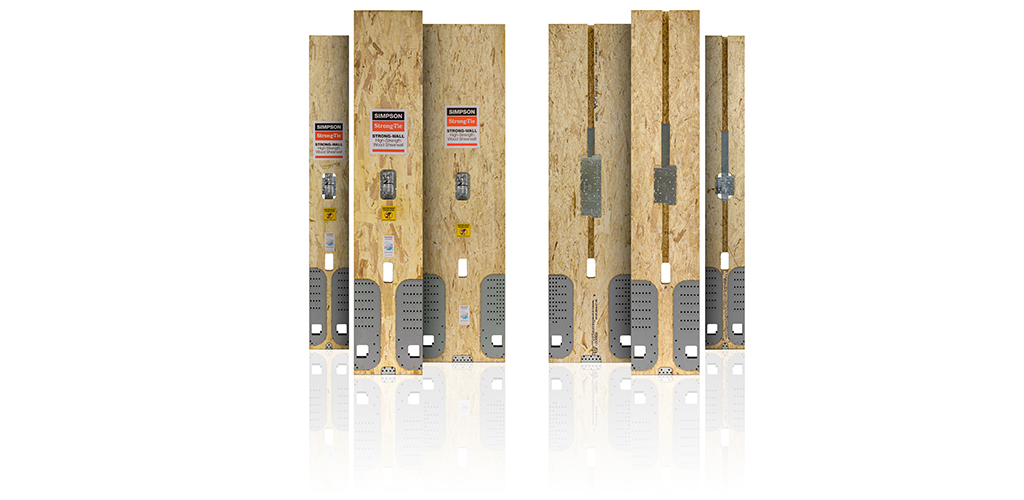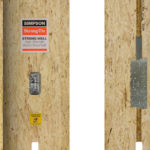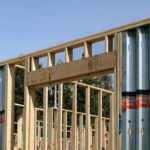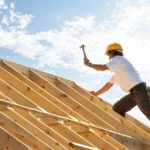In this post, we follow up on our July webinar, Innovations in Strength and Versatility: Overview of the Strong-Wall® High-Strength Wood Shearwall, by answering some of the interesting questions raised by attendees.
During the webinar, we discussed the new Simpson Strong-Tie® Strong-Wall high-strength wood shearwall (WSWH), a high-performance, easy-to-specify solution for lateral-force resistance in light-frame residential and commercial construction. Its patented, code-listed design provides the highest allowable loads across a wide variety of applications. And it’s field-trimmable for maximum design flexibility and customization. In case you couldn’t join our discussion, you can watch the on-demand webinar and earn PDH and CEU credits here.
As with our previous webinars, we ended with a Q&A session for the attendees. Our Senior Product Manager, Tom McClain, and our Engineer Supervisor, R&D Caleb Knudson, answered as many questions as they could in the time allowed. Now we are back to recap some of the commonly asked questions and their answers, but if you’d like to see the full list, click here.
Can we use post-installed anchors for installation if we have an existing footing?
It depends on whether your design criteria are based on wind or seismic. For seismic design categories C through F, we must develop the full strength of the anchor to ensure a ductile failure mode. This means precluding the more brittle concrete breakout and bond-strength failures. It’s unlikely that we’d be able to develop the full capacity of a post-installed anchor bolt, especially for near-edge conditions. Alternatively, if the demand force is sufficiently low, we’re able to design the anchorage for omega-level forces. For wind applications, if you can develop the capacity that you need based on your demand load with an adhesive anchor, then, yes, you can use post-installed anchorage. In cases where there’s an existing footing, underpinning is another alternative when the full capacity of the panel is required.
Is there a way to make this wall work in seismic retrofit applications and epoxy bolts?
It depends on whether your design criteria are based on wind or seismic. For seismic design categories C through F, we must develop the full strength of the anchor to ensure a ductile failure mode. This means precluding the more brittle concrete breakout and bond-strength failures. It’s unlikely that we’d be able to develop the full capacity of a post-installed anchor bolt, especially for near-edge conditions. Alternatively, if the demand force is sufficiently low, we’re able to design the anchorage for omega-level forces. For wind applications, if you can develop the capacity that you need based on your demand load with an adhesive anchor, then, yes, you can use post-installed anchorage. In cases where there’s an existing footing, underpinning is another alternative when the full capacity of the panel is required.
Your concrete coverage at stem wall seems minimal particularly when hairpins are used. Do you have stainless-steel hardware for corrosive soil environments?
If there are concerns about the concrete cover for either the anchor bolt or hairpins, there are a several options, as follows: The WSWH may be installed flush to the inside face of a 2×6 wall, or epoxy-coated anchor reinforcement may be used, and finally, the anchor bolt may be specified as hot-dip galvanized.
What width of header do you need for back-to-back walls? Is the anchor bolt layout the same as the older SW?
We require a minimum double 2×8 top plate for standard applications and a minimum 7″ x 11 1/4″ header for portal applications.
Approximate cost for the complete assembly?
Cost will vary based on source, quantity, and model or component. We would recommend visiting your local lumberyard.
Which client types are the primary users for the WSWHs? Multifamily? Do you see commercial, QSR, or retail using this as much? Is it cost comparable to a steel moment frame or similar alternate options?
Light-frame residential and multifamily are typical users, but the WSWH could also be used in light-frame commercial applications. As a rule, a steel moment frame will have higher capacities than a double portal prefabricated (Strong-Wall) portal frame system; however, the back-to-back application doubles the double portal load, and that higher capacity will fit in between the two.
For portal frames, has any testing/evaluation been done to assess the impact of shrinkage of the beam if it is dimension lumber, specifically in regard to excess movement/deflection due to a little strap buckling due to the shrinkage?
We expect header and/or rim joist shrinkage to be minimal in the applications for which the WSWH was intended. We further require the WSWH to be installed in continuously dry conditions for its service life. Finally, we require the header to have a moisture content less than or equal to 19% at the time of installation.
Can electric wiring or conduits be located inside the wall (if it has a cavity)?
Absolutely! There are a precut chase and cutouts to accommodate mechanicals. There are also allowable hole zones if the electrician or plumber needs to drill in through the side or face of the wall.
If the fuse is fractured, how to replace it?
When the wood fuse fractures in tension or compression, the panel must be replaced. You need to remove the panel by first removing the heavy hex nut and releasing the top connection, which means you’ll either have to gain access to the screws and cut the screws and then install the top connection on the inside face, or you’ll have to remove your exterior finish material and then remove the top connection plate and install a new one.
How will the performance of this shear wall will be affected if it’s subjected to moisture during installation/construction?
The WSWH must be protected from exposure to the elements during transport and while on the jobsite per instructions listed on the panel. If exposed to incidental moisture during construction, the panel must be allowed to dry to 12% moisture content before it’s enclosed within the building envelope.
Learn more about the Strong-Wall High-Strength Shearweall in this blog post.






